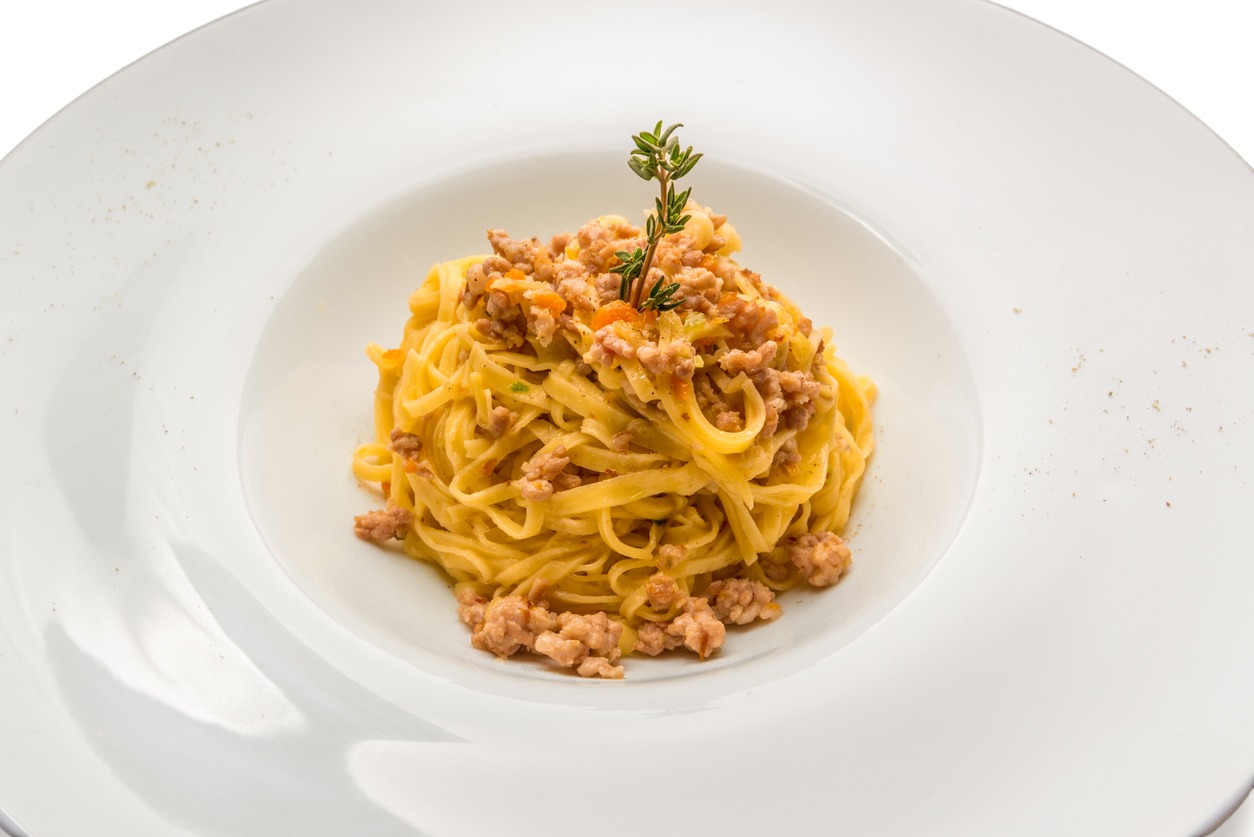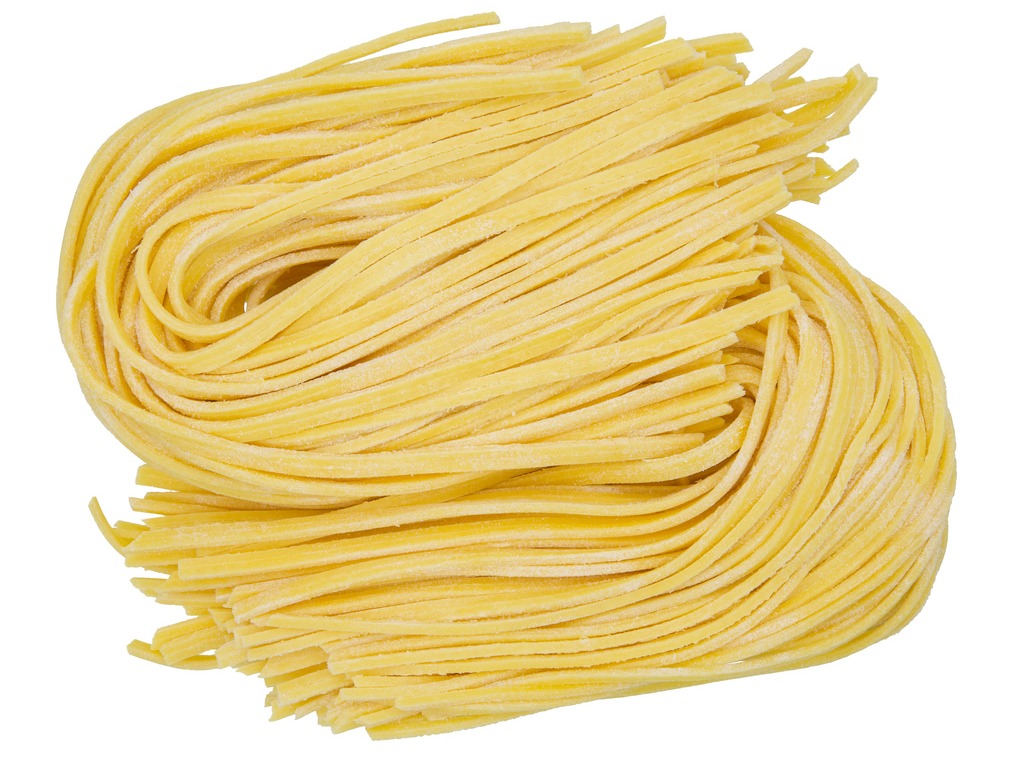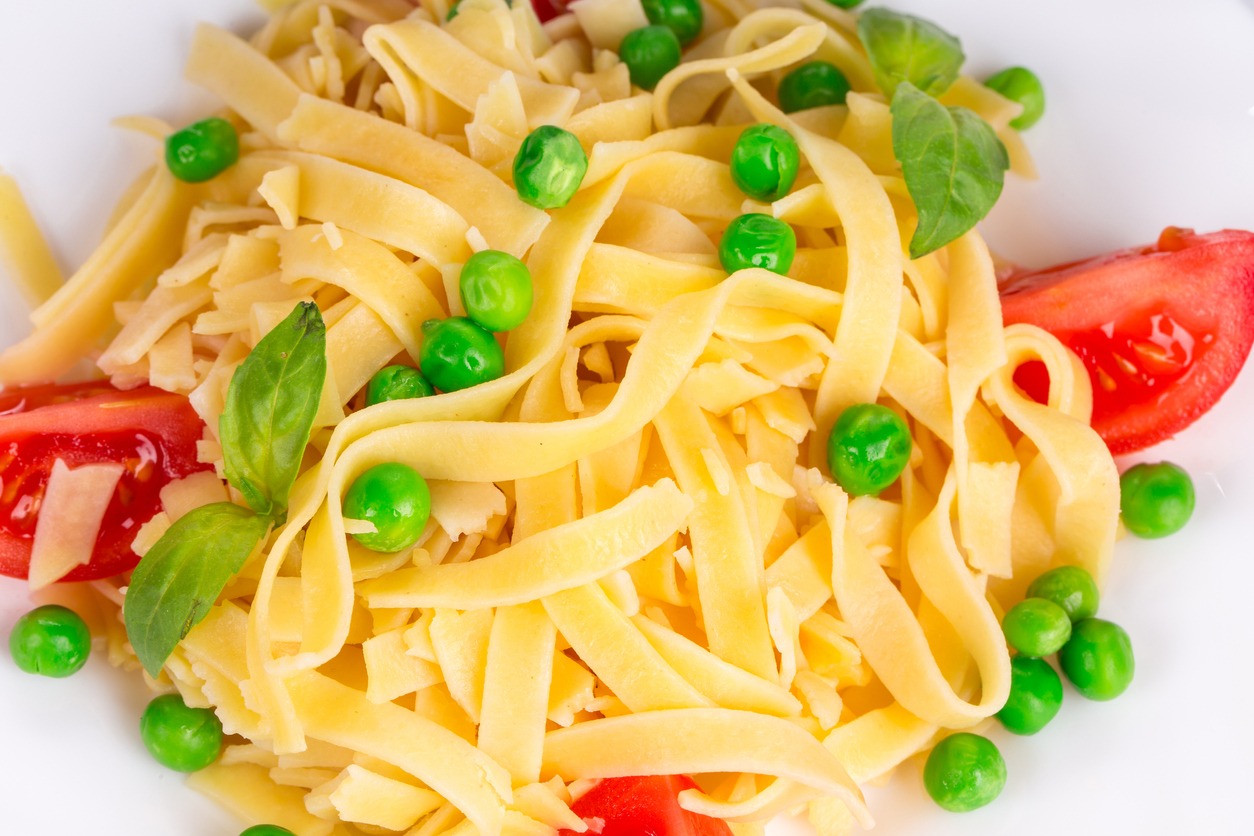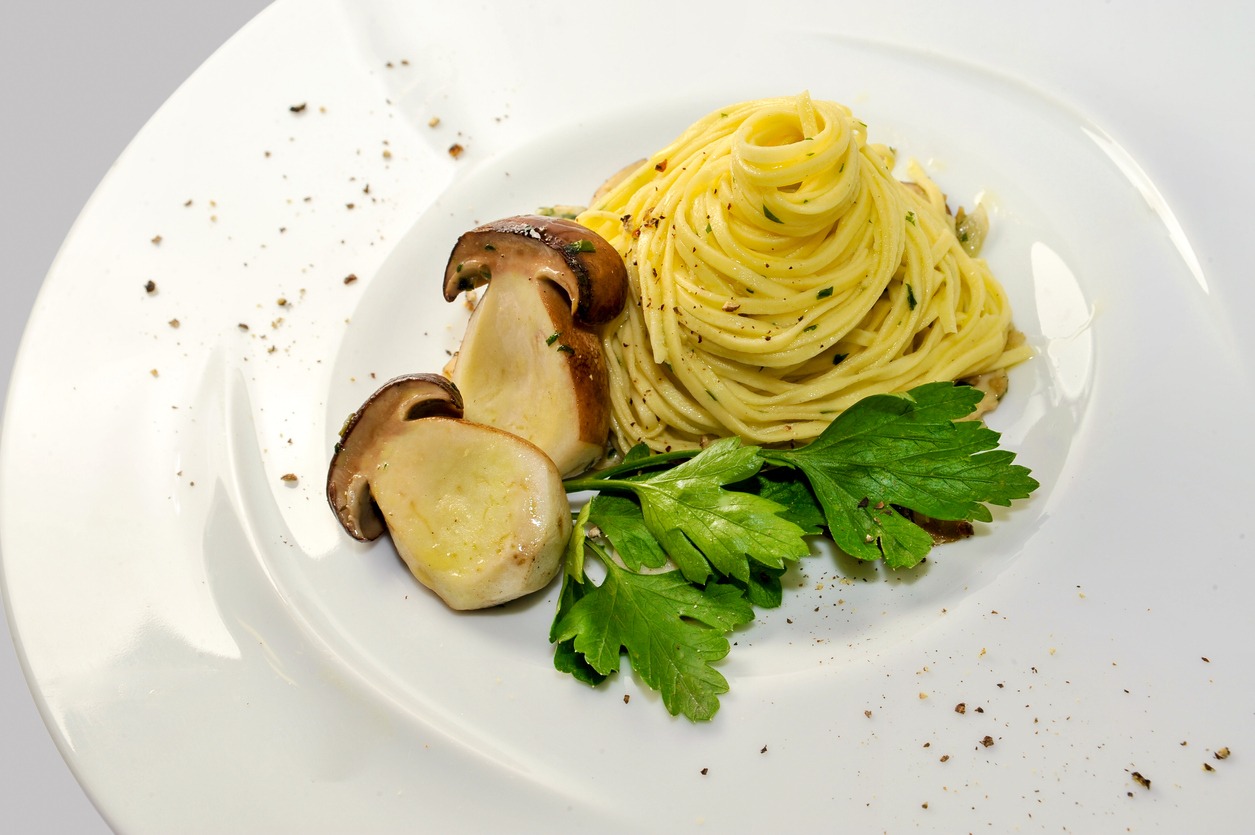Tagliolini are long strands of pasta that have a width somewhere between tagliatelle and capellini.
Every strand of pasta is around 2-3mm wide and is sometimes slightly cylindrical. Interestingly, the differences between tagliolini to other pasta is somewhat confusing to others.
Italians also named this pasta “Taglierini”. Even Wikipedia mentions that tagliolini is another name for taglierini. Despite the almost identical features, the two are different pasta varieties.
Taglierini is flat but thinner than tagliatelle, and takes time to cook.
Meanwhile, tagliolini are a bit slimmer and rounder and require lesser cooking time. It is common to see dried tagliolini sold as pasta nests in Italy.
Tagliolini is seen as a typical regional pasta in Liguria, Molise, Piemonte, and Emilia-Romagna.
In Piemonte, it is also named “Tajarin” in the local language. This pasta is mostly made with plenty of egg yolks, particularly orange yolks. The Tajarin in Piemonte is sometimes very thin, around 1mm, according to food writer Jacqui Debono of Pasta Project.
Tagliolini used some sauces that are usually creamy, relatively thin, and creamy.
In Rome alone, this type of pasta has become popular. It is served as a dish called “tagliolini cacio e pepe.” “Cacio” stands for pecorino cheese, particularly “pecorino romano”. While the term “pepe” is “pepper”, mainly the black pepper.
To achieve this, the romano cheese is smoothly grated, then put in a bowl and mix it with the pepper. Use a ladleful of the cooking water from the pasta to form a sauce.
Afterward, the sauce is stirred into the drained, cooked Tagliolini. Then garnish with plenty of grated pecorino. Make sure that pecorino is freshly grated to have it melt rapidly.
Some fantastic ways to cook Tagliolini
Tagliolini is perfect for many delicate pasta dishes. This type of pasta is also an awesome alternative to spaghetti. You can even achieve sweet pasta recipes using the tagliolini.
Serves 4
Ingredients:
3/4 pound fresh tagliolini
1 ounce butter
3.5 ounces fresh tomatoes concasse
2 field rucola clusters
3.5 Tbsp brandy
1 fresh
1 garlic clove
salt and pepper
Directions:
- Melt the butter in a saucepan and add minced onion and garlic clove.
- Simmer and throw out the garlic, add the tomato, salt, and prepare the brandy.
- Cook for about 5 minutes and lastly, add the rucola.
- Stir the sauce for 2 minutes and place the tagliolini cooked al dente. Amalgamate and serve warm.
The difference between Tagliolini and Tagliatelle
While the name tagliolini sounds the same as tagliatelle, the two are not really alike, except that both are traditionally egg pasta cut into ribbons.
“In fact, the word ‘taglia’ means cut in Italian and the difference is actually in the cut,” said known food writer Danilo Alfaro, who writes for the Spruce’s Eats.
Tagliatelle (pronounced “tal-ya-TELL-eh”) is a long and flat pasta that originated in Italy’s Marche and Emilia-Romagna.
This ribbon-like pasta is available in both dried and fresh varieties. This amazing pasta is traditionally served with meat sauce, like the classic Bolognese.
Tagliatelle is made from coarse flour from durum wheat.
The name originated from “tagliare”, an Italian verb. The word means “to cut”. Tagliatelle is traditionally done by rolling the dough into flat sheets. Thereafter, the dough is cut into ribbons using a kitchen knife. You can also make coiled or straight ribbons into a nest.
Accordingly, tagliatelle was thought to have come from Bologna, where people can find the classic Bolognese sauce.
There are plenty of ways to prepare tagliatelle. The preparations include tagliatelle al salmone, cooked with cream and chunks of smoked salmon; tagliatelle alla boscaiola,
with porcini mushrooms, creamy or a tomato-based sauce; and paglia e fieno, a mixture of green and yellow tagliatelle (the green is made by adding cooked spinach to the dough), and served in a cream sauce along with prosciutto, onions, peas, and olive oil.
Other preparations are Uova e formaggio, done with eggs and cheese, and pomodoro e basilico, with simple tomato and basil sauce, are also popular ingredients in cooking tagliatelle.
Alfaro said that “cooking tagliatelle is a simple matter of simmering it in salted water until it reaches the al dente stage, and how long that will take depends on whether you’re cooking with the fresh version or the dried one.”
Citing the Italian Academy of Cuisine, Alfaro stressed that the width of tagliatelle ribbons “should be 6.5 to 7 millimeters before cooking, which works out to about 8 millimeters wide after cooking.”
“The thickness of the ribbons is around 1 millimeter. In terms of the texture, because it’s made from coarsely ground semolina, the texture of the pasta for making tagliatelle is rather rough, giving the noodles a porous quality that helps thicker, heartier sauces adhere to it,” Alfaro emphasized.
How to cook tagliatelle
Since fresh pasta can be cooked very fast, depending on the thickness, you can cook it between two to four minutes.
Be sure to check the time to avoid overcooking the tagliatelle. With dried tagliatelle, the cooking time to achieve al dente is anywhere from 7 to 10 minutes.
Tagliatelle is one of the easiest kinds of pasta to make fresh at your home.
You can utilize a pasta machine to roll out the sheet of dough. You can simply roll it loosely into short folds, like you are rolling a rug.
In between rolling, sprinkle flour on each fold so that the pasta doesn’t stick.
Once the pasta is rolled, prepare your sharp knife and cut the roll into ribbons around 1 centimeter wide.
After you are done cutting pasta, cook it immediately or better refrigerate and cook it within a day.
“If you can’t find tagliatelle, your best substitutes would be either fettuccine or pappardelle, both of which are ribbon pastas,” Alfaro said.
“As a last resort, you could try linguine, although this is pretty narrow, and the strands are a bit thicker than tagliatelle,” the food writer suggested.
You can also match tagliatelle with hearty cream and rich meat sauces. According to Alfonso, in recipes that particularly call for tagliatelle, you can use it in dishes that call for fettuccine or pappardelle.




